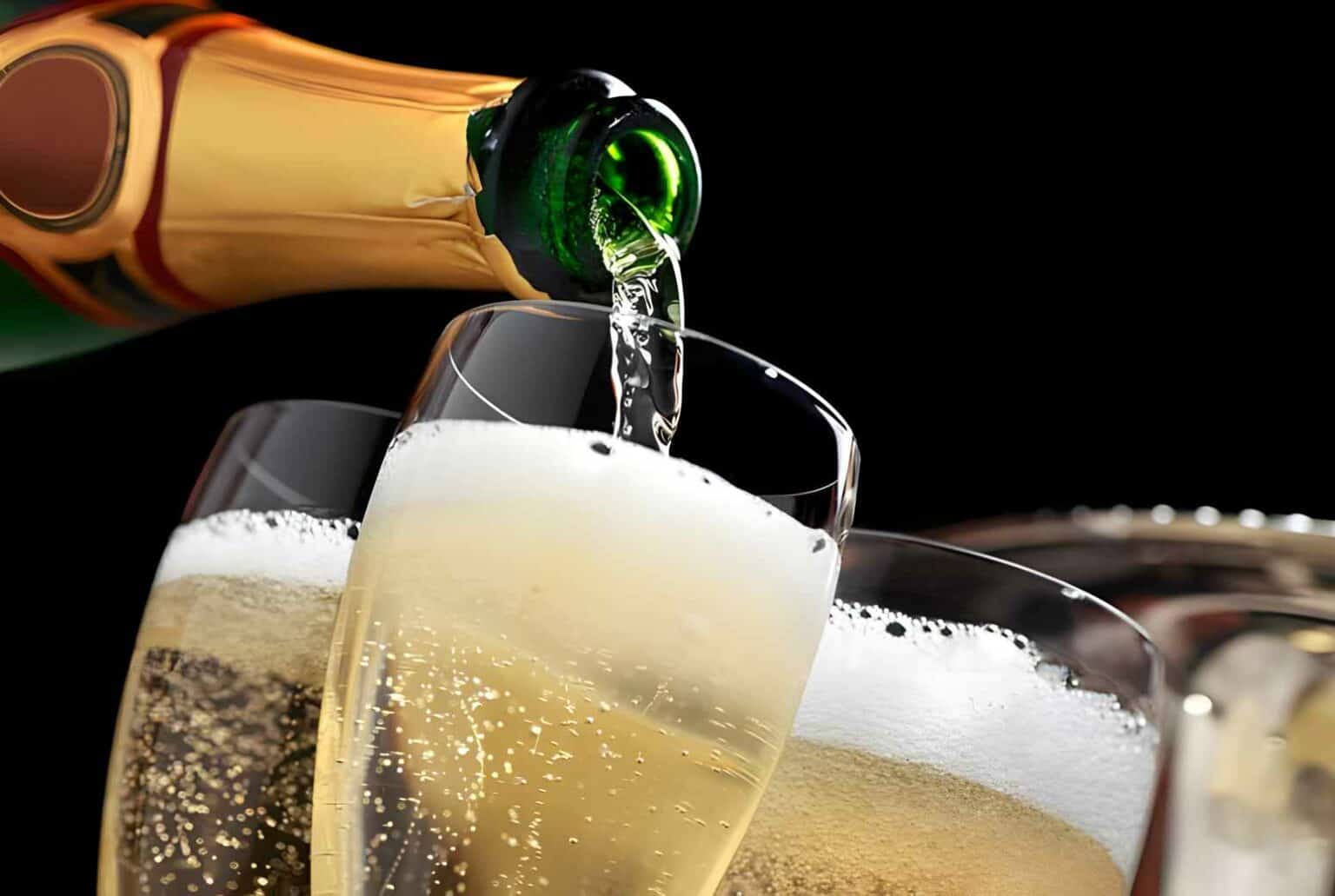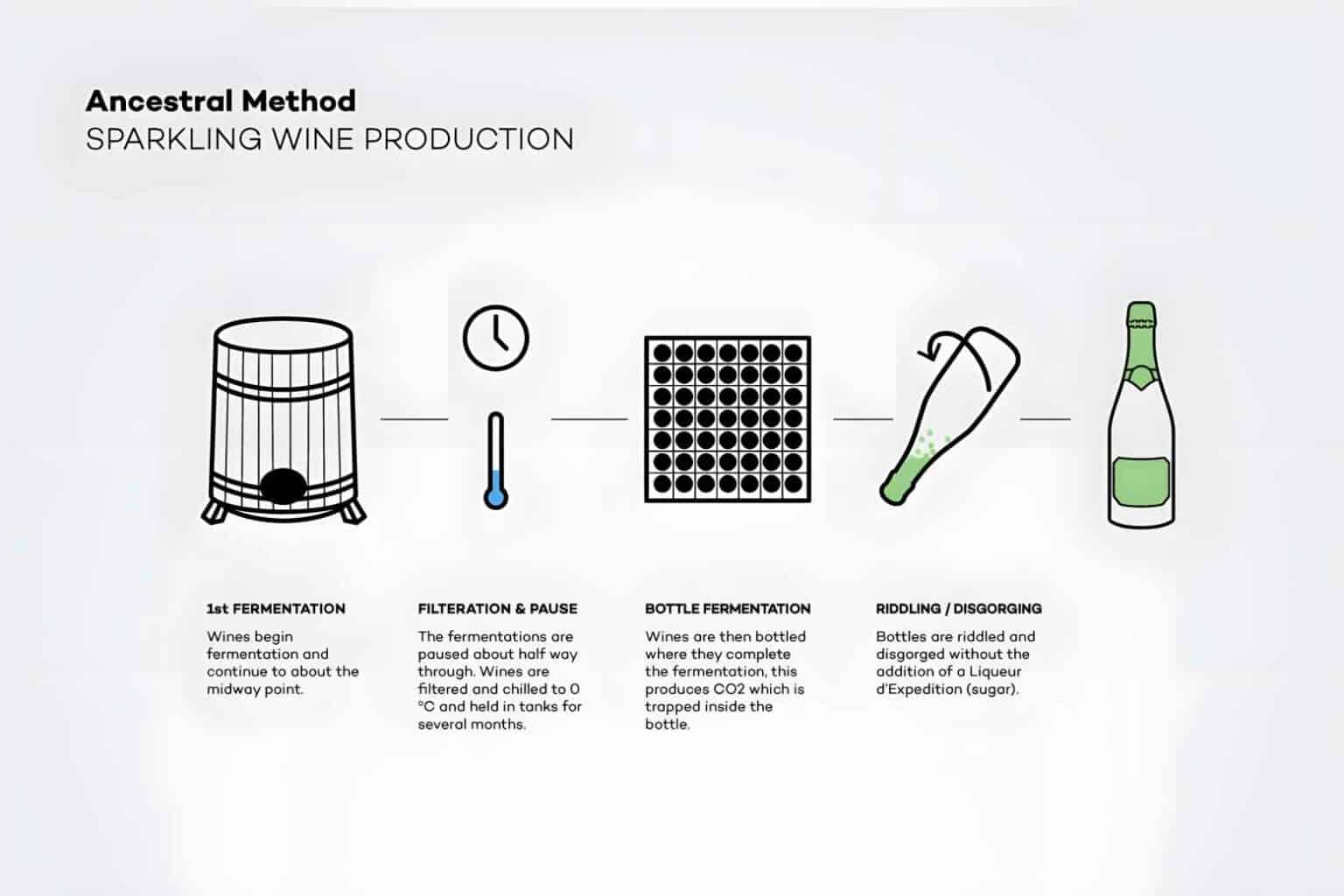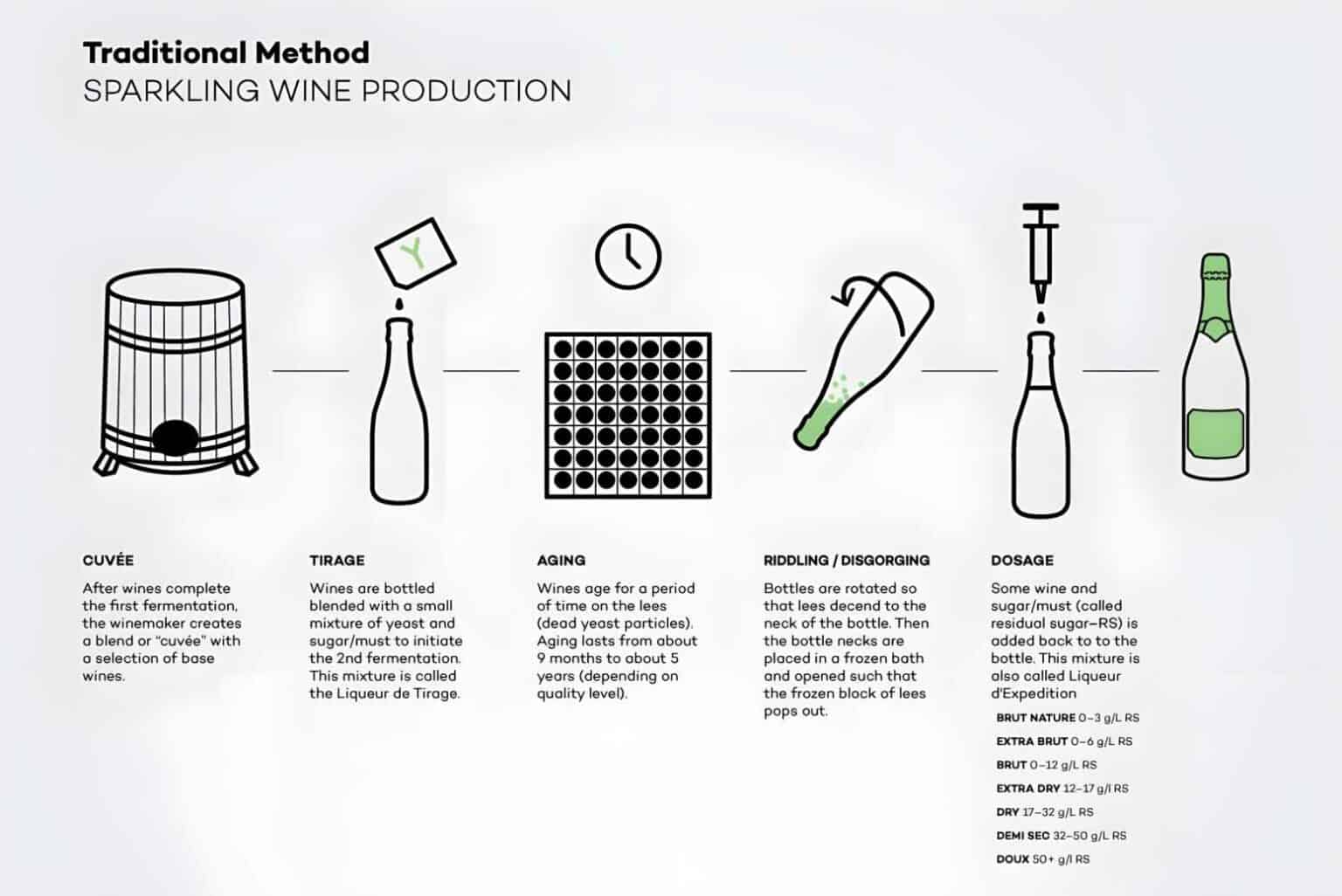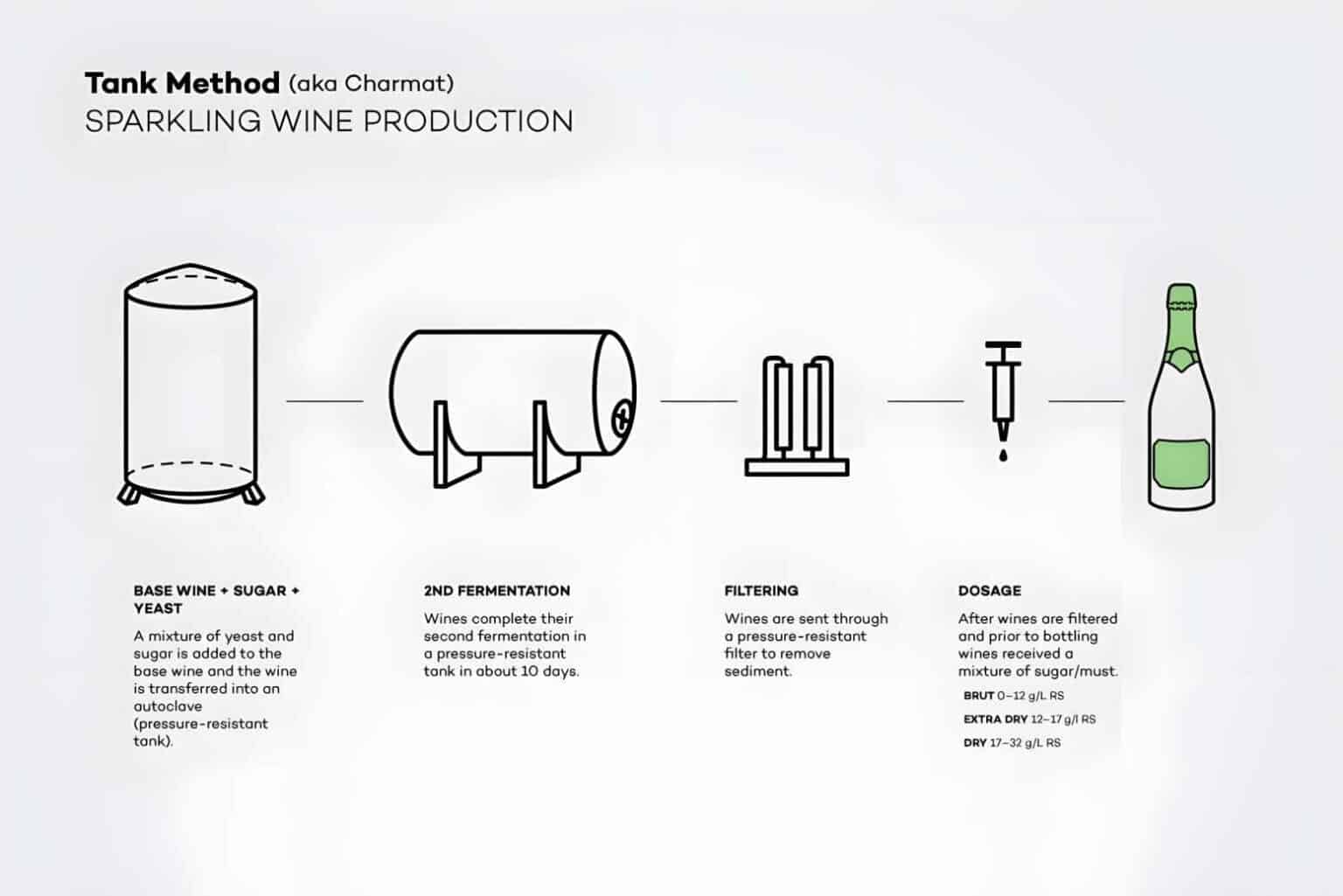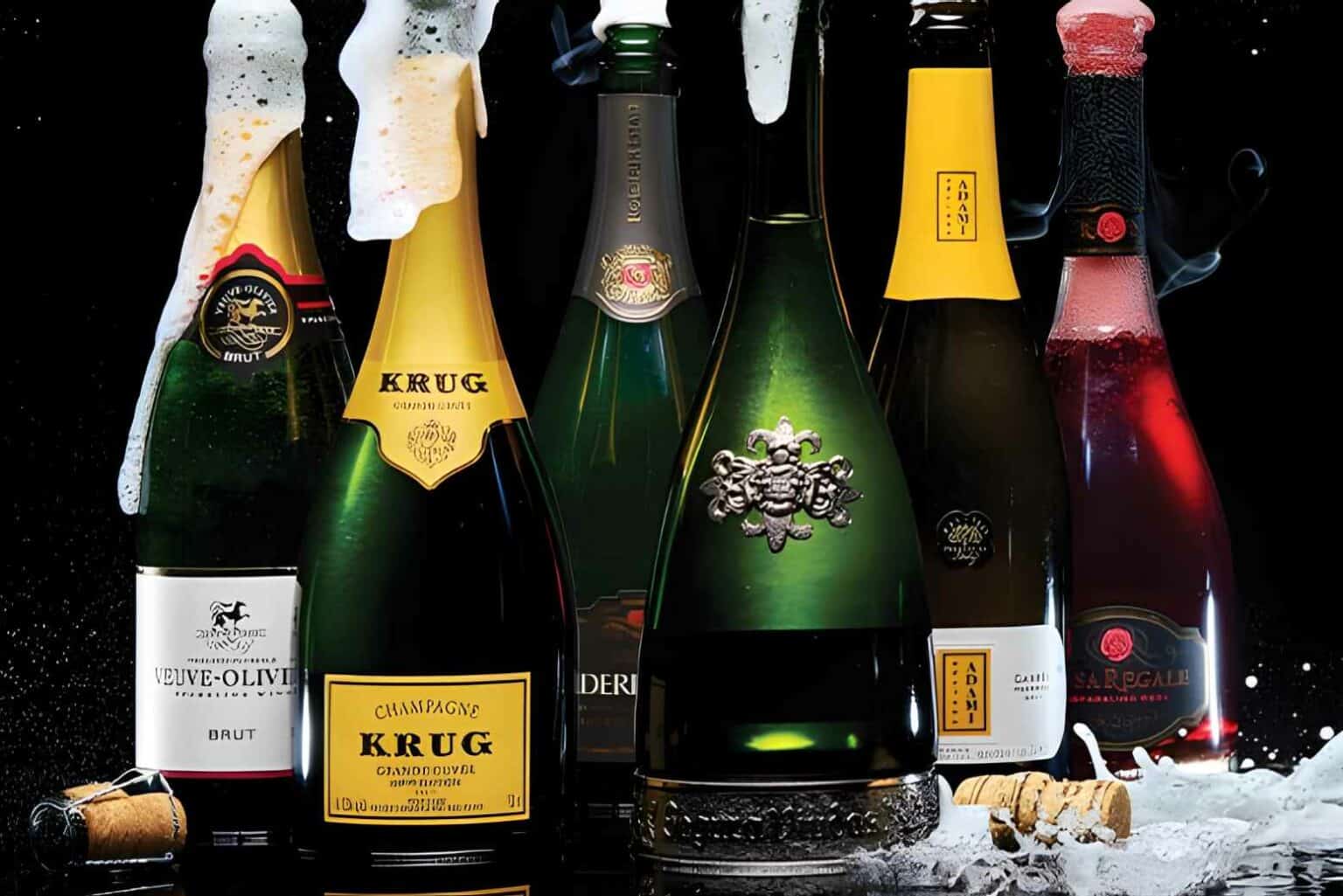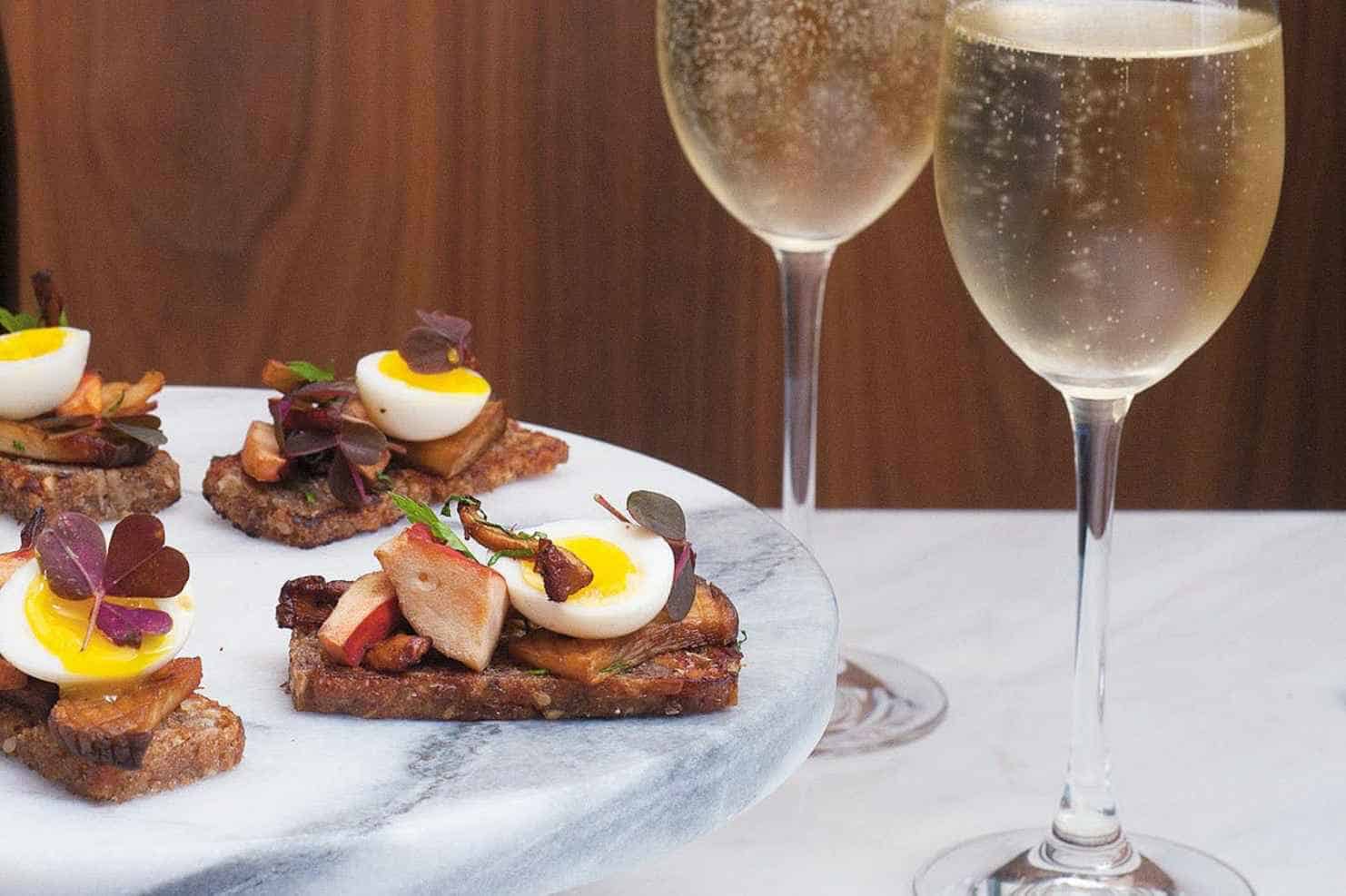Shoutout to all our alcohol-lover readers out there! Cheers for the weekend! Though some of us drink the same kind of alcoholic beverage over and over again, we might as well try different kinds of it while we are still young.
Let us live our lives to the fullest, right? So the first time you entered a bar and encountered various liquor options, you may have mumbled, “What is sparkling wine?”. Do not worry because we have got you covered!
What is Sparkling Wine?
Sparkling Wine is often offered during gala nights, fancy dinner dates, important business meetings, and some cocktail bars. However, not everyone is familiar with it. But just like any other wine, it is also made out of fermented grapes, whether red or white grapes, but with alcohol content and at the same time has some fizz, bubbles, and sparkles feature.
As the name implies, a sparkling wine sparkles in the form of a bubble effect due to its rich content. It is produced all around the world with various methods when it comes to production. Moreover, there are also a lot of types of .
What is the Origin and History of Sparkling Wine?
is a physician and also a member of the 17th-century gentleman, nobleman, polymath, and scientist group. He is one of the founders of the . Dr. Merret wrote a paper describing the process of how to make a sparkling wine on December 171,662.
He mentioned that the wine has to undergo another fermentation process after the first one. The second fermentation process allows you to add more sugar. By this, the wine will then produce bubbles. Hence, sparkling wine is achieved.
3 Characteristics of Sparkling Wine
Like any other type of wine, sparkling wine has many characteristics that can help you distinguish it a little bit easier. It has different dryness and sweetness levels, various styles, and tastes.
We have summarized below the 5 characteristics of sparkling wine for your reference. So the next time you encounter one, you will no longer be clueless about what it is.
7 Different Sweetness and Dryness Levels of Sparkling Wines
Just like the other wines, sparkling wines are also classified according to their level of sweetness. The sweetness and dryness level is often indicated and seen on the sparkling wine label.
The variety of sparkling wines has a wide range, so may it be dry or sweet, you have a wide selection of which your tastebuds would prefer depending on your food pairing, mood, palate, or what you were craving.
Listed below are the following levels and their corresponding sugar content:
| Sweetness and Dryness Level | Description | Sugar Content |
|---|---|---|
| Brut Zero Brut Nature Bone Dry | This is the driest among all because it has no or only little traces of sugar residue | 0 to less than 3 grams per liter |
| Extra Brut Extra Dry | This contains more sugar in comparison to the Brut Zero. | 0 to less than 6 grams per liter |
| Brut | This is the most conventional type of champagne. And this contains a little more sugar compared to Extra Brut. | 0 to less than 12 grams per liter |
| Extra Sec Extra Dry | This level is quite sweeter in comparison to Brut as it contains more sugar. | 12 to less than 17 grams per liter |
| Sec Dry | This is often labeled for champagnes that are off-dry. It has a higher amount of sugar residue in comparison to Extra Dry. | 17 to less than 32 grams per liter |
| Demi-Sec Semi-Dry | This level is highly advisable for people who prefer sweet wine. This has higher sugar content in comparison to Dry. | 32 to less than 50 grams per liter |
| Doux Sweet | This level is the sweetest among all because it has a higher amount of sugar residue. | Greater than 50 grams per liter |
Learn more about the sweetness of sparkling wine through this .
Techniques and Styles of Sparkling Wine
We have already established that making sparkling wine is tedious because it has to undergo another fermentation process. Hence, it is considered the most specialized or technical kind of wine.
Reductive and Autolytic or Oxidative are the 2 techniques of sparkling wine, both of which have corresponding styles.
Reductive Technique
The reductive technique has three styles, all of which preserve both the floral and fruity aroma, character, and flavor of the wine. As the name of the technique implies, it has a reduction of oxygen during the entire winemaking process.
Autolytic or Oxidative Technique
There is only one style for the autolytic technique. It has an exceptional taste with creamy flavors of brioche, hazelnut, honeycomb, toast, and yellow apple. In comparison to the reductive approach, where the oxygen is being reduced, the oxidative technique is done through aging. The aging process helps in improving the entirety of wine. Wines made with this technique are far more expensive simply because of the resources and time involved.
| Techniques | Styles | Description |
|---|---|---|
| Reductive Technique | Dry, Lean, and Zesty | ● Made using non-aromatic grapes such as Pinot Noi, Chardonnay, and alike ● Has the lowest sugar content ● Brut sweetness level |
| Dry, Fruity, Floral, and Light | ● Typically has a light taste ● Grapes are often mixed into the wine ● Has a more fruity and floral character ● Often found in warmer climate areas | |
| Scented and Sweet | ● Made with scented or aromatic grapes such as Moscato and alike ● Often sweetened through the dosage | |
| Autolytic or Oxidative Technique | Creamy, Nutty, and Rich | ● Look for the “extended tirage” label which means it has aged for a long time ● More expensive ● Nutty flavor ● Creamy texture |
What is the taste of a Sparkling Wine?
Sparkling wine has a lot of various tastes, and the best thing you should do to find out which one you like the most is to try them all!
Though the taste usually varies on the sweetness and dryness level, the flavors you will usually encounter include bready and toasty, fruity, citrusy, buttery, sour, and a lot more. The taste depends on what type of sparkling wine it is.
3 Different Production Methods of Sparkling Wines
The process of making sparkling wine is quite tedious compared to the rest simply because it has to undergo fermentation the second time around to achieve the bubbly and sparkle effect.
3 different production methods are used to make sparkling wine, all of which depend on how long and more expensive the production takes.
These methods are the Carbonation Method, Traditional Method, and Charmat Method.
Carbonation Method
The Carbonation method is the most economical approach when it comes to making sparkling wines. However, its downside is that the quality was compromised because it did not require much time to ferment wine.
Moreover, the yeast in the wine was flavorless, and the carbonation made the bubbles coarse. Hence, it will not give you much time to enjoy the drink as the bubbles will eventually vanish in a short span after you have opened the bottle.
Traditional Method
The traditional method, otherwise known as méthode traditionelle, is often used to make the best and highest-quality sparkling wines in the world.
This method allows the second fermentation of the wine while it is still in the bottle before adding some sugar and yeast. Hence, it takes a little longer and is not cost-effective but rest assured that the quality is at its peak.
Charmat Method
The Charmat method, otherwise known as the tank method, is quite popular due to its affiliation with Prosecco wine which is one of the many types of sparkling wine.
Sparkling wines made with this process have to go through another round of fermentation where the wine is transferred to a larger and locked pressurized tank where it has to be filtered. Hence, another term for this method is the transfer method.
Most winemakers highly prefer this method because it is more cost-efficient. However, it produces fruity, floral, and lightly sparkling wine aromas and flavors. In addition, it also has a larger bubble than the typical sparkling wine.
6 Different Types of Sparkling Wine
Though there are various types of sparkling wine that you may encounter, we will only be discussing 6 types that are the most common.
You may like all of them but most of the time, it depends on one’s preference. You can try them out and find which your tastebuds prefer the most.
These types of sparkling wine include Cava, Crémant, Prosecco, Sekt, Sparkling Rosé, and Trentodoc.
Cava
One of the 6 different types of sparkling wines is the Cava, which is relatively less sweet than the Prosecco Wine. It originated in Catalonia, Spain. The Cava is produced through the traditional method using Macabeo, a Spanish grape with a refreshing lemon taste.
Moreover, sparkling winemakers can also opt to use and to make Cava, resulting in a fruity citrus and pear flavor. All three kinds of grapes that are used to make Cava have a floral aroma.
Crémant
The Crémant is also produced through the traditional method. It originated and is being produced in many regions in France, including Burgundy, Limoux, and Loire. The aroma and flavors of the Crémant vary depending on the kind of grape that has been used to make this type of sparkling Wine. Nonetheless, most are in a nutty and creamy flavor.
Prosecco
The Prosecco sparkling wine got its name where it originated, which is in Prosecco, Italy. It used Glera grapes, which are pretty sweeter than the other grapes.
It is produced by following the process of the tank method, which makes its bubbles more prominent than usual sparkling wines. In addition to this, Prosecco wine is well-known as an excellent addition to .
Sekt
The Sekt is a type of sparkling wine that originated in Germany and is popularly known for having both low alcohol content, as low as 6% (also known as Alcohol By Volume), and low sweetness level.
Sparkling Rosé
Sparkling Rosé has a wide variety as it comes in various bubble sizes and forms. It has a rich and flavor. Moreover, it can also be in its still form, but most people love its bubbly form. The most common flavors you will encounter with this type of sparkling wine are honeydew, citrus, strawberry, and rose petals.
Trentodoc
is one of the favorites among many sparkling wine drinkers because of its affordability. Moreover, many prefer its fresh floral flavor even though it has a slight acidity. The grapes used in making this type of sparkling wine are exclusively grown in Trentino, Italy.
4 Additional Information about Sparkling Wines
We have added 4 additional pieces of information about sparkling wines below, including the famous countries that produce sparkling wines, the types of glasses you can use to serve sparkling wine, the best food pairings with your sparkling wine, and the r. Check out the information below for your reference:
Famous Countries that produce Sparkling Wines
Both Italy and France are the top 2 famous countries that produce top-tier sparkling wines, after all, it is the origin of all sparkling wines. Countries such as Australia, Canada, England, Germany, South Africa, Spain, and the United States of America also produce premium quality sparkling wines.
6 Common Types of Glasses used in serving Sparkling Wine
6 common types of glasses are usually used in serving sparkling wines. The most common physical feature of glass used for sparkling wines is that they have a vertical and narrowed glass bowl which helps preserve the carbonation of the sparkling wine and the flavor.
This allows the drinker to enjoy the sparkling wine without it going flat because it has lost its sparkling effect and taste.
Take a look at the information below about the 6 common types of glasses that are often used to serve sparkling wine:
| Type of Glass | Description | |
|---|---|---|
| Flute Wine Glass | ● It is considered a stem glassware with either a towering tapered conical form or elongated thin bowl ● Can contain more or less 180 ml or 300ml of liquid ● Relatively straight ● Has a short to medium stem length | |
| Tulip Wine Glass | ● Almost shaped like the Tulip flower ● The lower portion is slim and slowly broadens in the middle part and narrows a little towards its opening | |
| Saucer/ | ● Has a plain and quite distinct shape compared to the other stem glassware ● Its shape is in a short yet wide and shallow bowl with middle length stem ● Can contain at least 180 ml to 240 ml of fluid | |
| White Wine Glass | ● Usually smaller compared to red wine glassware ● Has longer stems ● Has sharper curvature within the bowl ● Has a narrower opening at the glass rim | |
| Trumpet Flute Wine Glass | ● Almost like a clone of the Flute Wine Glass, but its sides are tapered down to its stem | |
| Stemless Champagne Glass | ● Does not have a stem compared to the other types of glasses ● Has to be gripped fully ● Sturdy and solid ● Not prone to breakage ● |
23 Best Food Pairings for Sparkling Wine
Make sure that you pair your sparkling wine with some food that compliments its flavor. This will allow you to enjoy the totality of the sparkling wine. Listed below are the following best food pairings for your sparkling wine:
- Salty Cheese
- Sour Cheese
- Buttery Cheese
- Nutty Cheese
- Dry Uami Cheese
- Clam
- 7. Oyster
- Scallop
- Buttercream sauce
- Buttered Popcorn
- Shrimp and shellfish
- Smoked Salmon
- Fried Calamari
- Caviar
- Tarts
- Crepes
- Salami
- Brie and Prosciutto
- Carrot
- Turnip
- Pumpkin
- Squash
- Yam
10 Recommended Sparkling Wine Brands
If you are not entirely familiar with the different famous brands when it comes to sparkling wine, you can use this as your reference whenever you want to purchase.
Please take note that these are probably famous and highly recommended due to many factors such as their quality, cost, and taste. Although there are many recommended brands, we have only listed 10 for your reference.
Summary
You may have heard someone in the bar with you casually say, “What is sparkling wine

George Moore, co-founder of Wine Flavor Guru, is a charismatic entrepreneur with a rich background in California’s wine industry. Alongside Sylvia, he transformed a Sonoma County vineyard into a source of premium wines. George’s expertise in sourcing exceptional grapes and his approachable style make wine appreciation both accessible and engaging.

